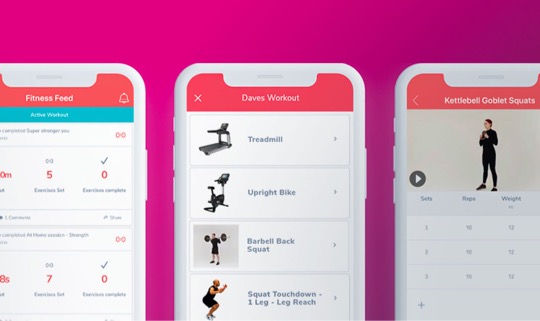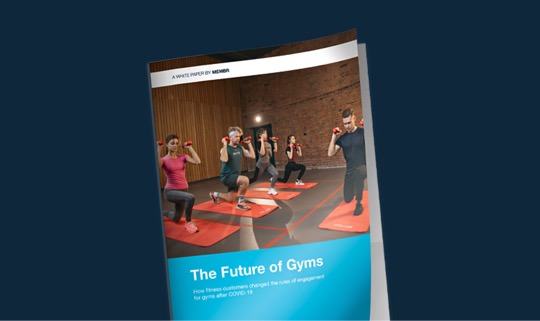After two years of constant turbulence, gyms are now adapting to the new normal. But what about personal trainers? Data shows that PTs are twice as likely to build their own digital brand and train clients remotely post-COVID.
There’s consistent data that shows 90% of new trainers quit within the first year, and that’s even before the pandemic disrupted the fitness industry.
According to CNN, personal trainers had no other choice but to become more creative and entrepreneurial during the lockdowns, which allowed them to connect with exercisers in new digital ways. But is this digital thinking here to stay?
In the blog below you will learn:
- How has the pandemic affected the PT industry?
- Is the future of personal training online?
- How can gyms attract and retain PTs after COVID-19?
Let’s start with a look at what the past two years have been like for personal trainers.
How has the pandemic affected PTs?
Like most people throughout the pandemic, personal trainers had to overcome a lot of changes and challenges.
While months of gym closures helped some trainers increase their status through online classes and digital 1-2-1 sessions, many trainers found little to no work during the pandemic.
Data from 2020 shows that most personal trainers have shifted the way the view coaching as a result of COVID-19 (PRNewsWire, US, 2020):
- One in five trainers made more money during the pandemic, and about the same number said their income didn’t change.
- Before the pandemic, 60% of trainers worked with their clients in person. After the pandemic, only 14% plan to coach primarily in person – a 75% decline.
- Before the pandemic, 7% of trainers coached online. Post-pandemic, 21% plan to work primarily online, a 300% increase!
- Before the pandemic, 32% of trainers combined in-person and online training. This number has now doubled – 62% plan to combine in-person and online training.
The good news is that only 1% of trainers say they’re going to permanently leave the fitness industry. It’s very likely, however, that there’s a larger group of PTs that have now gained new skills during the lockdowns and might consider moving to different sectors.
Health has never been a bigger priority for all of us, but not all exercisers are in a hurry to make a full comeback to the gym. With online coaching and digital fitness content, some gym-goers have shifted to exercising remotely following the guidance of not one, but many trainers.
For the trainers who remain committed to helping exercisers get fit offline, in order to be successful in this post-COVID climate, they will have to get better at relationship building in the gym. Alternatively, they would need to gain some extra digital skills and extend their offerings online to support gym-goers outside of the fitness facility in order to keep the same level of engagement.
Is the future of PT online?
According to the Personal Trainer Salary 2021 survey, online personal trainers are earning more. Training clients online makes it possible for PTs to reach more people in less time and scale up their offerings.
There’s, of course, a downside to only coaching exercisers virtually. Trainers say that it’s “hard to establish a connection with someone who you’ve never met in person and if they don’t have access to equipment.”
What’s more, it’s hard to give instructions to people who are doing the exercises incorrectly – or even spot them in the first place – during online fitness classes.
So just like traditional coaching on the gym floor, digital coaching has its challenges too.
Accessibility might be the biggest selling point to remote coaching for both trainers and exercisers, but with the increasing number of new trainers launching fitness content online, digital competition for PTs to be noticed and followed will only increase.
As appealing as it might be for new trainers to kick-start their career entirely online, meeting and teaching clients in the space of the gym remains the best way to build a good network while learning the needed social skills to excel as a PT.
How can gyms attract and retain PTs?
There’s enough business online and offline for personal trainers, but in order for fitness clubs to attract and retain the best ones, they will need to upgrade their offering.
Here are five factors that can help you as a gym owner to create the perfect employment contract, so that personal trainers want to stay longer at your facility.
1. Lower monthly rent
If your business model is to offer PTs to use your gym space for a monthly rent, consider lowering that monthly rate as a way to remove an entry barrier or to remove any financial worries for those who are struggling with monthly sales.
Whatever the structure and pricing you settle on, it’s important that you start the conversation with employees. When a person feels valued at their workplace, they are more likely to stay longer and try a little harder to meet the monthly sales targets.
2. Remove focus on sales
When gym owners measure the success of their PTs primarily by their sales numbers, they might be missing the bigger picture.
There’s a more important question fitness operators and managers should be asking: “How many customers were actually influenced by our PTs during the last month?”
Around 80% of people who have a gym membership don’t use it. Personal trainers have a unique opportunity to lower that number significantly. How do we know that? Well, 44% of people admit they work out more when with a partner.
Retention and engagement are as important as making new sales, but much more difficult to measure.
When trainers focus on reaching as many people as possible and their target becomes increasing the number of member visits, their impact will become so much more beneficial to the fitness club.
3. Create opportunity for more involvement (such as marketing and events)
To be a successful personal trainer, you need to be an easy-going, bubbly and charismatic person. These qualities can help individuals become quite influential within social circles.
If your PTs feel like doing sales just isn’t for them, but love chatting to clients, then maybe you can use their skills to promote the latest programmes, ongoing fitness challenges and limited time offers.
How’s marketing different from sales? Well, sales is largely about the numbers, marketing more focused on generating awareness and increasing knowledge about existing products, solutions and opportunities.
So if your PTs spend their day talking to gym-goers about the upcoming 30 day fitness challenge, they get to do what they love – fitness – and help encourage exercisers to join a social activity, which will ultimately increase their overall motivation and impact their average stay at your gym.
4. Offer continuous education
We mentioned earlier that some PTs might reconsider coming back to the gym floor with all the digital tools available to scale up their own fitness brand from the space of their living room. But for those who enjoy in-person communication and want to keep building their portfolio of clients, digital tools can still be useful for relationship management and remote engagement.
Many PT courses don’t cover some of the most recent disruptive trends, such as how to create a successful TikTok channel with fitness content or how to stream classes on YouTube like a pro.
While these new skills are not covered in most PT certifications, there are many online courses that can help trainers stay up to date with new trends and meet customer expectations in real time.
5. Introduce more perks
We all love to be rewarded for doing a great job or even just for showing up! Offering discounts, partner perks and surprise gifts can have a huge impact on your trainers in terms of job satisfaction and team spirit.
Just like with customers, it costs twice as much to find new trainers than to attract existing ones. Treat yours with kindness and generosity, and you will build a team of loyal employees who want to help your business grow while they grow with you.
We know that the future of fitness is in the hands of us all, whether we are content creators, consumers at home or educators in the gym. Fitness operators have the power to build a healthier world with the help of trainers, as long as they are honest about their vision and needs, and work side by side.













